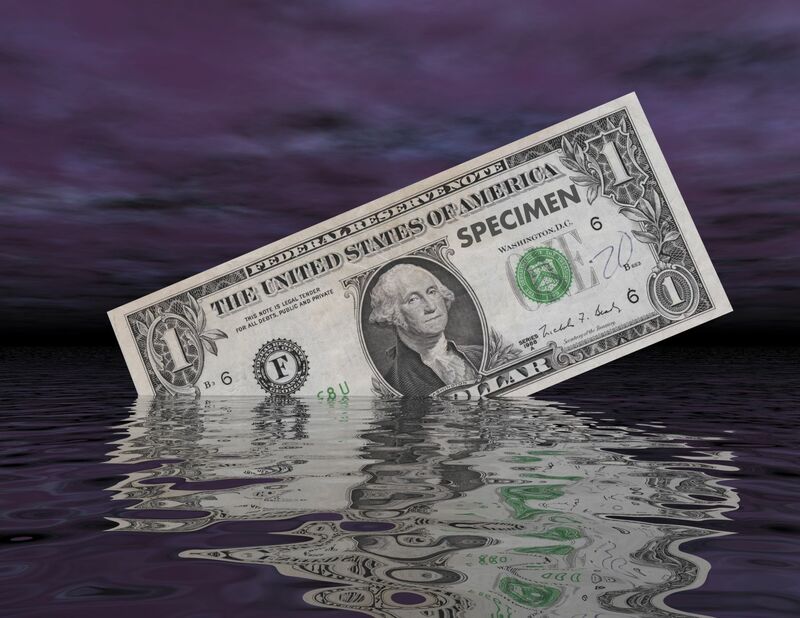
The dollar index (DXY00) on Friday fell by -0.09% and posted a 7-week low. The dollar on Friday was under pressure after the U.S. Feb unemployment report bolstered expectations for the Fed to begin cutting interest rates by the June FOMC meeting. Friday’s fall in the 10-year T-note yield to a 5-week low was also bearish for the dollar. The dollar recovered from its worst levels Friday after stocks gave up an early advance and turned lower, boosting liquidity demand for the dollar.
U.S. Feb nonfarm payrolls rose +275,000, stronger than expectations of +200,000. However, Jan payrolls were revised downward to +229,000 from the previously reported +353,000. The Feb unemployment rate rose +0.2 to a 2-year high of 3.9%, showing a weaker labor market than expectations of no change at 3.7%.
U.S. Feb average hourly earnings eased to +4.3% y/y from +4.4% y/y in Jan, right on expectations.
Dovish comments on Friday from Chicago Fed President Goolsbee were bearish for the dollar when he said, "As inflation comes down, the Fed will be moving toward less restrictiveness over the course of the year."
The markets are discounting the chances for a -25 bp rate cut at 2% for the March 19-20 FOMC meeting and 25% for the following meeting on April 30-May 1.
EUR/USD (^EURUSD) on Friday fell by -0.09%. The euro on Friday fell back from a 7-week high and posted modest losses on dovish comments from ECB Governing Council members Nagel and Villeroy de Galhau, who said the ECB could begin cutting interest rates in the spring. On Friday, the euro initially moved higher on the stronger-than-expected German industrial production and PPI reports that were hawkish for ECB policy.
German Jan industrial production rose +1.0% m/m, stronger than expectations of +0.6% m/m and the biggest increase in 11 months.
German Jan PPI of +0.2% m/m and -4.4% y/y was stronger than expectations of +0.1% m/m and -6.6% y/y.
ECB Governing Council member and Bundesbank President Nagel said, "The probability is increasing that we could see an interest rate cut before the summer break."
ECB Governing Council member Villeroy de Galhau said, "It seems very probable that there will be a first rate cut in the spring."
Swaps are pricing in the chances for a -25 bp rate cut by the ECB at 17% for its next meeting on April 11 and fully priced in that -25 bp rate cut (106%) for the following meeting on June 6.
USD/JPY (^USDJPY) on Friday fell by -0.66%. The yen on Friday climbed to a 5-week high against the dollar on a Reuters report that said BOJ policymakers are leaning toward exiting negative interest rates at this month’s policy meeting. The yen also rose after the 10-year JGB bond yield climbed to a 3-week high Friday, strengthening the yen’s interest rate differentials. The yen extended its gains Friday after T-note yields retreated.
Reuters reported that an increasing number of BOJ policymakers are leaning toward scrapping the BOJ's negative interest rate at this month's policy meeting, given expectations of larger wage increases this year.
Japan Jan household spending fell -6.3% y/y, weaker than expectations of -4.1% y/y and the biggest decline in nearly three years.
The Japan Jan leading index CI fell -0.6 to 109.9, stronger than expectations of 109.7.
The Japan Feb eco watchers outlook survey unexpectedly rose +0.5 to a 9-month high of 53.0, stronger than expectations of a decline to 52.2.
Swaps are pricing in the chances for a +10 bp rate increase by the BOJ at 67% for its next meeting on March 19 and 79% for the following meeting on April 26.
April gold (GCJ4) on Friday closed up +20.3 (+0.94%), and May silver (SIK24) closed down -0.029 (-0.12%). Precious metals on Friday settled mixed, with April gold posting a contract high and nearest-futures (H24) gold posting an all-time high. Friday’s fall in the dollar index to a 7-week low is bullish for metals. Also, a slump in U.S. and European government bond yields supported precious metals on Friday. In addition, speculation that the Fed and ECB will soon pivot to cutting interest rates has sparked the buying of gold as a store of value. Finally, persistent geopolitical risks in the Middle East have underpinned safe-haven demand for precious metals.
On the negative side, funds continue to liquidate their long gold positions after long gold holdings in ETFs fell to a 4-year low on Thursday. Silver prices were under pressure Friday after the U.S. Feb unemployment rate unexpectedly rose to a 2-year high, a sign of labor market weakness that is negative for industrial metals demand.
On the date of publication, Rich Asplund did not have (either directly or indirectly) positions in any of the securities mentioned in this article. All information and data in this article is solely for informational purposes. For more information please view the Barchart Disclosure Policy here.






